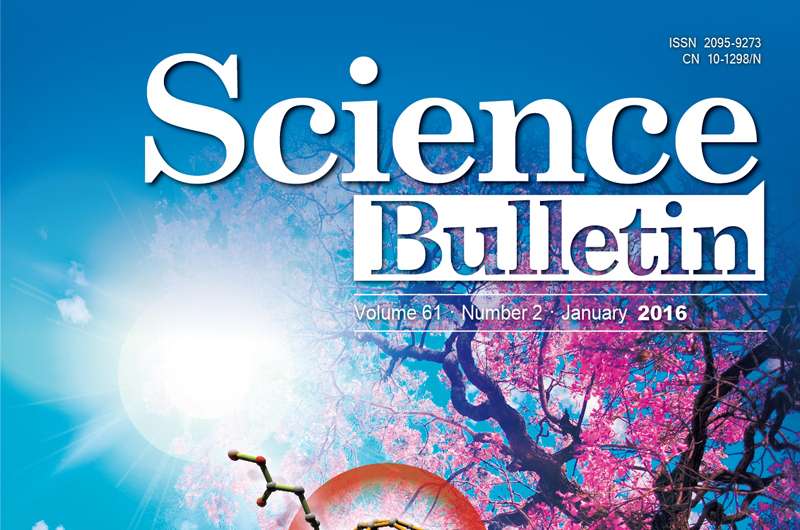Scientists provide a new guideline for the synthesis of fullerene electron acceptors

Organic/polymer solar cells represent the most important direction for green energy in the future. Fullerene electron acceptors have been widely used in organic/polymer solar cells as well as perovskite solar cells. A recent study reveals that the photovoltaic performance can be influenced by fullerene stereomer, implying that the stereomeric effect should be considered for new fullerene derivatives designed as electron acceptors.
The paper was reported in Science Bulletin 2016(2) issue, titled "Stereomeric effects of bisPC71BM on polymer solar cell performance" and "Theoretical insight into the stereometric effect of bisPC71BM on polymer cell performance," by Su-Yuan Xie and Yi Zhao et al from Xiamen University. The authors synthesized and separated two stereomers of bisadduct analogues of [6,6]-phenyl-C71-butyric acid methyl ester (bisPC71BM). Although both isomers have the same spectrometric and electronic properties, the researchers found a photovoltaic discrepancy. Supported by both crystallographic and theoretical analyses, the stereomer-dependent photovoltaic performance was revealed to result from a discrepancy of molecular packing.
Up to now, fullerene derivatives [6,6]-phenyl-C61-butyric acid methyl ester (PC61BM) and its C70 analogue PC71BM still dominate the fullerene acceptors, which were developed 20 years ago. Due to their excellent properties, including high electron mobility, strong light absorption, good solubility, high electron affinity and good compatibility with donor materials, PC61BM and PC71BM are the best electron acceptors synthesized so far. In the past 20 years, efforts have been made to develop new electron acceptors superior to PC61BM/PC71BM. However, it is difficult to accomplish. It requires a suitable fullerene core, to which the correct functional groups are attached, and depends on the number of addends and their addition position, etc. Although researchers never cease to synthesize novel fullerene acceptors according to these guidelines, and hundreds of fullerene acceptors have been synthesized in the past 20 years, the photovoltaic performance of these fullerene acceptors is still not good enough.
In principle, if researchers can consider these factors, it could be possible to obtain fullerene acceptors with a specific photovoltaic performance. So why have researchers failed to create better fullerine electron acceptors? Are there other factors that should be taken into consideration?
It should be noted that the synthesized fullerene derivatives have stereomers even when considering such guidelines as the fullerene core, the type of functional groups attached to fullerene core, and the number of addends and their addition position. Do these fullerene stereomers have different photovoltaic performance? To address this question, the researchers designed two stereomers of bisadduct analogues of PC71BM (bisPC71BM) with cis or trans configuration, whgich were used as electron acceptors in polymer solar cells. They demonstrated that the two stereomers have very similar LUMO energy levels and light absorption as well as other properties.
However, polymer solar cells based on the two stereomers exhibited different photovoltaic performance (compared with cis-bisPC71BM, the trans-bisPC71BM has an efficiency about 7 percent for improving the power conversion efficiency of polymer solar cells). Further investigation shows that the difference in crystal packing pattern of bisPC71BM isomers is the main cause of their divergent photovoltaic performance. A theoretical investigation also reveals that the molecular packing of isomers affects the electron mobility and exciton dissociation efficiency. Thus, both experimental and theoretical investigations demonstrate that the stereometric effects of fullerene acceptors have an important impact on solar cell performance. Therefore, a new guideline for designing efficient electron acceptors was proposed.
The main difficulty of this experiment is the synthesis and separation of bisPC71BM stereomers. The two stereomers were separated by a multistage, high-performance liquid chromatography (HPLC) technique from 28 isomers. The molecular structures were unambiguously determined by X-ray single-crystal analysis to determine their crystal structure and molecular packing. Bulk-heterojunction solar cells using poly (3-hexylthiophene) (P3HT) as donor and bisPC71BM stereomer as acceptor were fabricated and the photovoltaic performance was evaluated to investigate the stereomeric effects of bisPC71BM on polymer solar cell performance. Theoretical investigation was performed via combination methods of electronic structure calculations and Marcus theory, with emphasis on employing independent structural parameters to predict measurable variables in experiment.
By comparing theoretical calculation results with experimental data, theoretical investigation reveals the mechanism behind the different photophysical processes caused by stereomers and proposes possible ways to further enhance the photovoltaic performance. Therefore, the researcher propose a new guideline on the stereomeric effects of fullerene derivative for designing efficient electron acceptors, which more fully accounts for the factors that affect photovoltaic performance. It also provides new ideas for developing excellent electron acceptors with high electron mobility, strong light absorption, good solubility, high electron affinity and good compatibility with donor materials.
More information: Lin-Long Deng et al. Stereomeric effects of bisPC71BM on polymer solar cell performance, Science Bulletin (2016). DOI: 10.1007/s11434-015-0979-5
Wen-Peng Wu et al. Theoretical insight into the stereometric effect of bisPC71BM on polymer cell performance, Science Bulletin (2016). DOI: 10.1007/s11434-015-0984-8
Provided by Science China Press




















